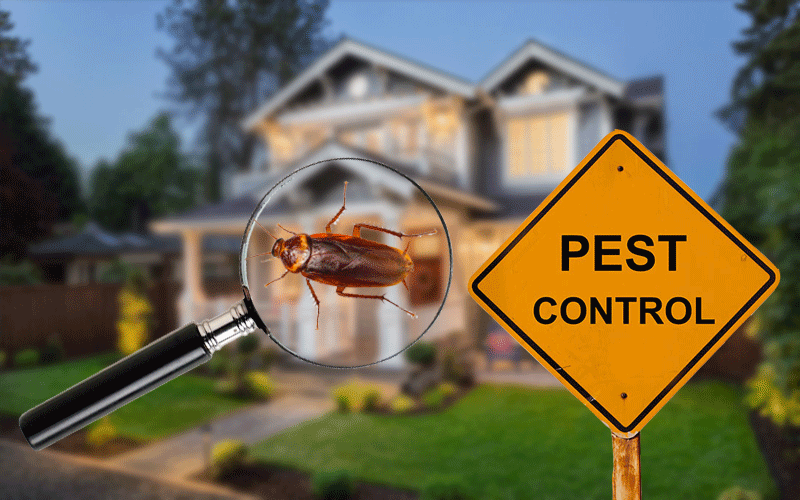Experienced A1 Exterminators Charlotte NC - Rapid and Dependable Solutions
Experienced A1 Exterminators Charlotte NC - Rapid and Dependable Solutions
Blog Article
Bed Insect Treatment Malfunction: Comparing Chemical Vs. Non-Chemical Solutions
In the world of bug control, particularly when taking care of the relentless concern of bed insects, the choice in between chemical and non-chemical treatment remedies can be an essential one. Both techniques supply distinctive benefits and downsides, affecting aspects such as effectiveness, safety factors to consider, and overall expense. By analyzing the nuanced information of each technique, a clearer understanding of which path to pursue in attending to a bed bug invasion can be attained.
Performance of Chemical Treatments
Chemical therapies for bed bug invasions have been widely acknowledged for their potent and rapid effectiveness in removing these insects. When thinking about the efficiency of chemical treatments, it is vital to understand that they can provide a quick and thorough service to a bed pest trouble. Specialist pest control men usually count on insecticides to target bed insects at different stages of their life process, consisting of adults, nymphs, and eggs. These chemicals typically function by interrupting the bed pests' anxious system, leading to paralysis and eventual death.
Additionally, chemical therapies have the benefit of providing residual results, indicating that they can remain to eliminate bed insects even after the preliminary application. This residual action is specifically useful in combating any type of possible re-infestations. In addition, the quick action of chemical treatments can bring alleviation to people facing severe bed insect invasions, permitting them to gain back control of their living rooms rapidly.
Safety And Security Interest In Chemical Solutions
One important element that requires cautious consideration when making use of chemical options for bed bug treatment is making certain the safety and security of owners and the atmosphere. Direct exposure to specific chemicals made use of in bed insect therapies can lead to breathing concerns, skin inflammation, or various other negative reactions, specifically in individuals with pre-existing conditions or level of sensitivities.
In addition, the environmental influence of chemical solutions is one more significant consideration. Some chemicals used in bed insect treatments might be dangerous to beneficial insects, wild animals, and environments if they seep right into the dirt or water systems. It is necessary to make use of chemical therapies carefully, adhering to safety guidelines, and thinking about less poisonous choices to reduce these risks and guarantee the safe and efficient management of bed insect infestations.
Advantages of Non-Chemical Methods
Thinking about the possible security issues and environmental effect connected with chemical remedies for bed bug therapy, checking out non-chemical approaches provides a promising choice with numerous unique advantages. Non-chemical treatments are eco pleasant, as they do not add to air or water pollution, making them a lasting choice for bug control.
Additionally, non-chemical solutions can be effective in targeting bed insects, including hard-to-reach locations where chemical treatments might not permeate - A1 bed bug treatment in charlotte. Methods such as warmth treatment, vacuuming, heavy steam cleansing, and bed mattress coverings supply thorough elimination without the usage of dangerous chemicals.
Limitations of Non-Chemical Treatments

Additionally, non-chemical treatments frequently require numerous applications to achieve effective obliteration. This can be taxing and might not constantly assure full elimination of all bed pests and their eggs, specifically in covert or hard-to-reach areas.
In addition, the success of non-chemical treatments heavily depends on appropriate execution and thoroughness, which can be challenging for individuals without expert experience. Insufficient application of non-chemical approaches might lead to insufficient elimination, bring about consistent invasions and the demand for extra treatments.
As a result, while non-chemical treatments have their benefits, it is additional resources crucial to acknowledge these limitations and consider them when figuring out the most reliable approach for taking care of bed pest problems.
Price Comparison: Chemical Vs. Non-Chemical Options
Given the restrictions connected with non-chemical therapies, a crucial facet to examine in the context of bed pest monitoring is the price contrast in between chemical and non-chemical options. Chemical treatments he said usually include the application of insecticides by experts, which can vary from $250 to $900 per room, depending on the intensity of the infestation and the dimension of the location to be dealt with. In comparison, non-chemical treatments like heat treatment or heavy steam can be much more expensive, with expenses varying from $1,000 to $6,000 for a whole home. While the first expense of chemical treatments might appear reduced, numerous therapies may be called for to totally remove the invasion, potentially enhancing the overall price. On the various other hand, non-chemical options might give an extra sustainable and environment-friendly service, although they can be cost-prohibitive for some individuals. Inevitably, when taking into consideration the expense of bed insect treatment choices, it is necessary to weigh the in advance expenditures versus the effectiveness and lasting sustainability of the chosen method.
Conclusion

Considering the prospective safety and security concerns and environmental impact connected with chemical solutions for bed bug therapy, checking out non-chemical strategies presents a promising option with several distinct advantages.Given the restrictions associated with non-chemical therapies, a crucial aspect to assess in the context of bed pest management is the cost comparison in between chemical and non-chemical options. In comparison, non-chemical therapies like heat treatment or vapor can be a lot more expensive, with expenses ranging from $1,000 to $6,000 for an entire home. While the preliminary price of chemical therapies might seem reduced, multiple therapies might be called for to fully eradicate the invasion, potentially raising the general price.In verdict, when contrasting chemical and non-chemical bed pest treatment choices, it is essential to consider performance, safety, advantages, constraints, and expense.
Report this page